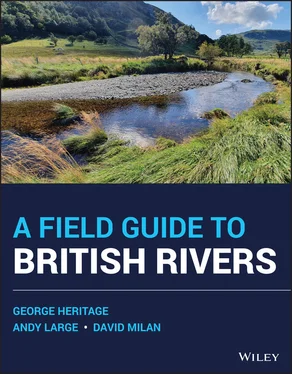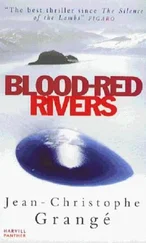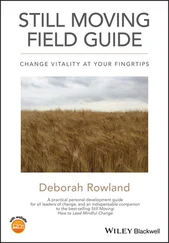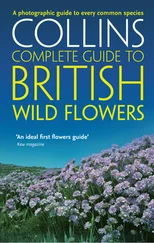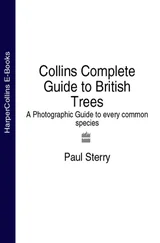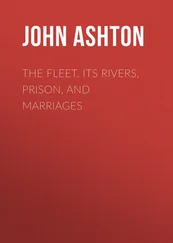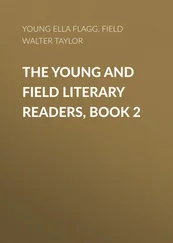5 Chapter 5Figure 5.1 Controls on river channel form and function, where thicker lines ...Figure 5.2 Timeline of river and catchment alteration in the United Kingdom ...Figure 5.3 Historic change in UK river systems (a) Middle Ages – semi‐natura...Figure 5.4 Spatial extent of river channel and floodplain change in England,...Figure 5.5 Key developments in stream science over the period 1960–2020h...
1 Cover Page
2 Title Page
3 Copyright Page
4 Dedication Page
5 Foreword
6 Table of Contents
7 Begin Reading
8 References
9 Place and River Index
10 Subject Index
11 Wiley End User License Agreement
1 iii
2 iv
3 v
4 ix
5 x
6 1
7 2
8 3
9 4
10 5
11 6
12 7
13 9
14 10
15 11
16 12
17 13
18 14
19 15
20 19
21 20
22 21
23 22
24 23
25 24
26 25
27 26
28 27
29 28
30 29
31 30
32 31
33 32
34 33
35 34
36 35
37 36
38 37
39 38
40 39
41 40
42 41
43 42
44 43
45 44
46 45
47 46
48 47
49 48
50 49
51 50
52 51
53 52
54 53
55 54
56 55
57 56
58 57
59 58
60 59
61 60
62 61
63 62
64 63
65 64
66 65
67 66
68 67
69 68
70 69
71 70
72 71
73 72
74 73
75 74
76 75
77 76
78 77
79 78
80 79
81 80
82 81
83 82
84 83
85 84
86 85
87 86
88 87
89 88
90 89
91 90
92 91
93 92
94 93
95 94
96 95
97 96
98 97
99 98
100 99
101 100
102 101
103 102
104 103
105 104
106 105
107 106
108 107
109 108
110 109
111 110
112 111
113 112
114 113
115 114
116 115
117 116
118 117
119 118
120 119
121 120
122 121
123 122
124 123
125 124
126 125
127 126
128 127
129 128
130 129
131 130
132 131
133 132
134 133
135 134
136 135
137 136
138 137
139 138
140 139
141 140
142 141
143 142
144 143
145 144
146 145
147 146
148 147
149 148
150 149
151 150
152 151
153 152
154 153
155 154
156 155
157 156
158 157
159 158
160 159
161 160
162 161
163 162
164 163
165 164
166 165
167 166
168 167
169 168
170 169
171 170
172 171
173 172
174 173
175 174
176 175
177 176
178 177
179 178
180 179
181 180
182 181
183 182
184 183
185 184
186 185
187 186
188 187
189 189
190 190
191 191
192 192
193 193
A Field Guide to British Rivers
George Heritage
Salford University, Salford, UK
Andy Large
University of Newcastle, Newcastle upon Tyne, UK
David Milan
University of Hull, Hull, UK

This edition first published 2022
© 2022 John Wiley & Sons Ltd
All rights reserved. No part of this publication may be reproduced, stored in a retrieval system, or transmitted, in any form or by any means, electronic, mechanical, photocopying, recording or otherwise, except as permitted by law. Advice on how to obtain permission to reuse material from this title is available at http://www.wiley.com/go/permissions.
The right of George Heritage, Andy Large and David Milan to be identified as the authors of this work has been asserted in accordance with law.
Registered Offices John Wiley & Sons, Inc., 111 River Street, Hoboken, NJ 07030, USA John Wiley & Sons Ltd, The Atrium, Southern Gate, Chichester, West Sussex, PO19 8SQ, UK
Editorial Office 9600 Garsington Road, Oxford, OX4 2DQ, UK
For details of our global editorial offices, customer services, and more information about Wiley products visit us at www.wiley.com.
Wiley also publishes its books in a variety of electronic formats and by print‐on‐demand. Some content that appears in standard print versions of this book may not be available in other formats.
Limit of Liability/Disclaimer of Warranty While the publisher and authors have used their best efforts in preparing this work, they make no representations or warranties with respect to the accuracy or completeness of the contents of this work and specifically disclaim all warranties, including without limitation any implied warranties of merchantability or fitness for a particular purpose. No warranty may be created or extended by sales representatives, written sales materials or promotional statements for this work. The fact that an organization, website, or product is referred to in this work as a citation and/or potential source of further information does not mean that the publisher and authors endorse the information or services the organization, website, or product may provide or recommendations it may make. This work is sold with the understanding that the publisher is not engaged in rendering professional services. The advice and strategies contained herein may not be suitable for your situation. You should consult with a specialist where appropriate. Further, readers should be aware that websites listed in this work may have changed or disappeared between when this work was written and when it is read. Neither the publisher nor authors shall be liable for any loss of profit or any other commercial damages, including but not limited to special, incidental, consequential, or other damages.
Library of Congress Cataloging‐in‐Publication Data
[ISBN 9781118487983]
Cover image:
Cover design by
In memory of Martin Charlton (1957–2021)
An unassuming academic with a brilliant mind, indubitable character and unbounded enthusiasm for his work and students. Martin will be missed by all who knew him. His influence will live on well beyond his short life.
Temperate rivers are influenced by many factors including geology, climate, soils, sediment type, flow and human activity. The complex interactions of the non‐anthropogenic controlling factors have led to a wonderful variety of river form in the British Isles. Sadly, however, almost all temperate rivers in the United Kingdom have suffered significant and long‐lasting modification and management that has all but destroyed this variety, instead creating simplified conduits for water and sediment designed primarily to drain the land and reduce flood risk. This book is intended to illustrate this variety, highlighting the many forms that temperate river systems take in the United Kingdom. In this volume, we cover upland and lowland channel types and include the full range of substrate conditions from bedrock through boulder, cobble and gravel through to silt‐dominated systems. In doing this, we describe examples gathered from over 30 years each of research and practical experience working with rivers and set these in the context of the current scientific knowledge to illustrate the natural functioning of temperate river types. We hope this will act as a practical, context‐sensitive and more sustainable template for the restoration and re‐naturalisation of degraded channels in the United Kingdom and as a working set of guidelines for those interested in understanding more about the rich variety of temperate river types. In doing this, we know other examples exist (e.g. the practical guides from the UK River Restoration Centre), and so we intend this volume with its balance between science and practicalities of river management to compliment these other approaches but essentially to act as a stand‐alone guide.
Читать дальше
